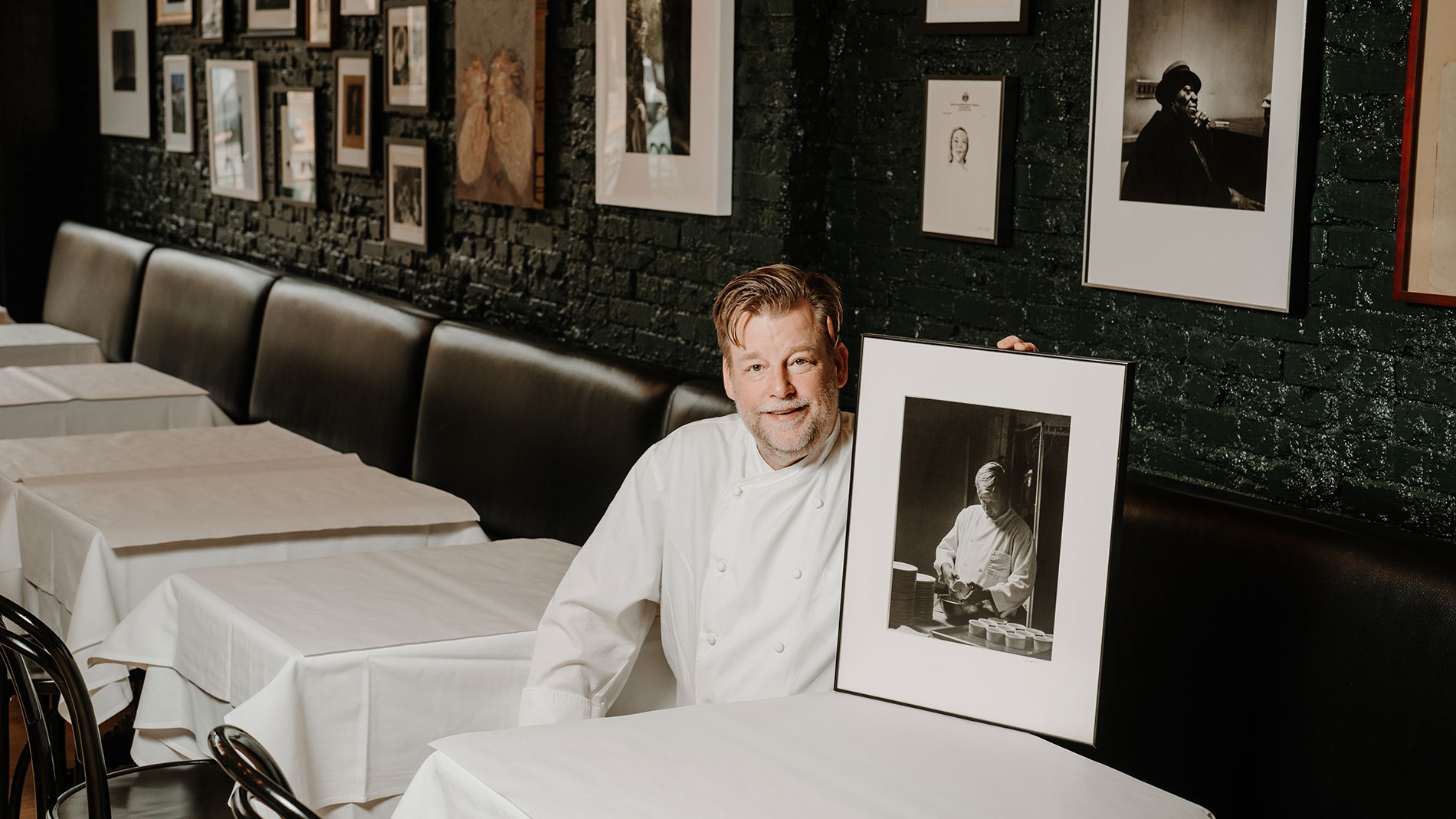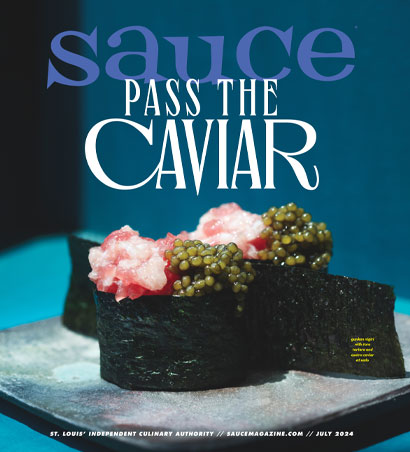3 meals that changed Wright’s Tavern executive chef Cary McDowell's life
Chef Cary McDowell’s career started with a handwritten letter requesting an apprenticeship at famed French restaurant Lutèce in New York City. He left his parents’ home in Arkansas to apprentice there and, later, at Restaurant Bertrand in Greenwich, Connecticut, owned by Christian Bertrand, a former executive chef at Lutèce. (A portrait of McDowell making souffles at Bertrand’s now-closed restaurant hangs inside the dining room at Wright’s Tavern, where McDowell is executive chef.) During that time, he learned how to clean Dover sole, break down live lobsters and make puff pastry. He also learned discipline. “I get excited about making the simple things because there’s nowhere to hide,” he said. “To have the discipline and the desire to make things perfect every single time, that’s the essence of my profession; that’s what my job is.”
Hot Souffles, Restaurant Bertrand, 1991
“Restaurant Bertrand in Connecticut – that’s me right there, doing souffles. I was fortunate to have a pretty decent French apprenticeship experience. There is a hesitancy to let somebody very temporary do something significant. So, if you were lucky like I was, you got thrown in and you started doing stuff. That photograph on the wall is literally me learning how to make hot souffles, which is an art. They’re tedious, they’re exact, they’re delicate. What I love about it most is it proves that if you slow down and pay attention to every detail in the steps of making it, if you have the discipline to do that every time, [then] every time it works perfectly. Christian Bertrand taught me how to make that dish. It was the culmination of three or four basic lessons on my first couple days of work.
The photographer was a wonderful guy too, Reuben Dauzoir; he was a pretty happening New York art guy. He came out of the club days of Studio 54, and he lived above me in our little apartment in Port Chester, New York. … He gave me that print for my graduation from culinary school; my parents hung that on their wall. My dad just passed away last year, and so I had it and when we were gathering stuff [for Wright’s Tavern], Matt [McGuire] asked if we could put it up. So, there it is.”
Dessert by Francois Payard, Daniel, 1993
“My parents came on my mother’s birthday to eat at Daniel [in New York City]. At that time, Julia Child and her friends had been coming to lunch there and knew [chef-owner] Daniel [Boulud] really well, and she would come back and say hi to us in the kitchen, so I got to somewhat know her.
Mom and Dad were there for the first time – they were having lunch, and Julia Child was also in the dining room. When Daniel and I went out to say hello to my parents and, in [Boulud’s] way, bring a whole bunch of stuff for the dessert course … Mrs. Child said, ‘Cary!’ My mother heard her say my name, and so she connected those dots, like, ‘Oh my God, Julia Child knows my son’s name?’ It was pretty overwhelming, and that’s really what made my stock go up in my parents’ eyes.”
Halibut, Wright’s Tavern, 2023
“King Louie was sort of Matt [McGuire]’s art project, and I helped his young folks become the chefs they needed to be. I had other jobs then, so I was never officially there, but my heart was always there; whatever Matt needed, I was always available.
As Matt and I discussed what was going to be on the [Wright’s Tavern] menu, one of the things we talked about was a halibut dish at King Louie. It was potato crusted, [but] it wasn’t quite this refined. I don’t want to say that to belabor the King Louie’s version, but the components are all the same. It’s just representative of how long we’ve been going down the road. This iteration wouldn’t have been possible then, but it is now because of all the things we’ve learned. It all started with a conversation about, ‘Remember how good that was? We should definitely have that on the menu here.’
The way the halibut exists at this moment is the result of that whole process of consideration, memory, inspiration and then ultimately the need to have something that’s unique to here. The way we figured out how to do the potato scales is not new – and by no means am I the first to do this – but, for us, it’s an evolution of what it was previously, and that’s the important thing. Matt and I wanted to do things that were recognizable and comfortable and classic. We don’t want to do riffs on things; we want to do the best thing. All roads have led to [Wright’s Tavern], it’s true, and I get really emotional about it. This is what we were always working toward, and here we are.”
Tags : People
Most Recent
Drink this savory martini at The Lucky Accomplice in St. Louis
The Lucky Accomplice’s bar manager Corey Moszer is thinking outside the box …






